Your living space may be smaller than you want it to be…but it doesn’t have to look that way. There are several relatively easy to grasp design principles — centering around the concepts of scale, light, and movement — you can employ to trick the eye into perceiving a greater sense of space.
While it’s easy to focus on the downsides of smaller rooms, let’s not forget the positives: There’s less empty wall space to decorate, less to clean, and the compact space will likely discourage you from storing unnecessary items there (aka developing clutter). Here’s how you can make the most of those small spaces by giving them the appearance of being bigger than they actually are.
Declutter
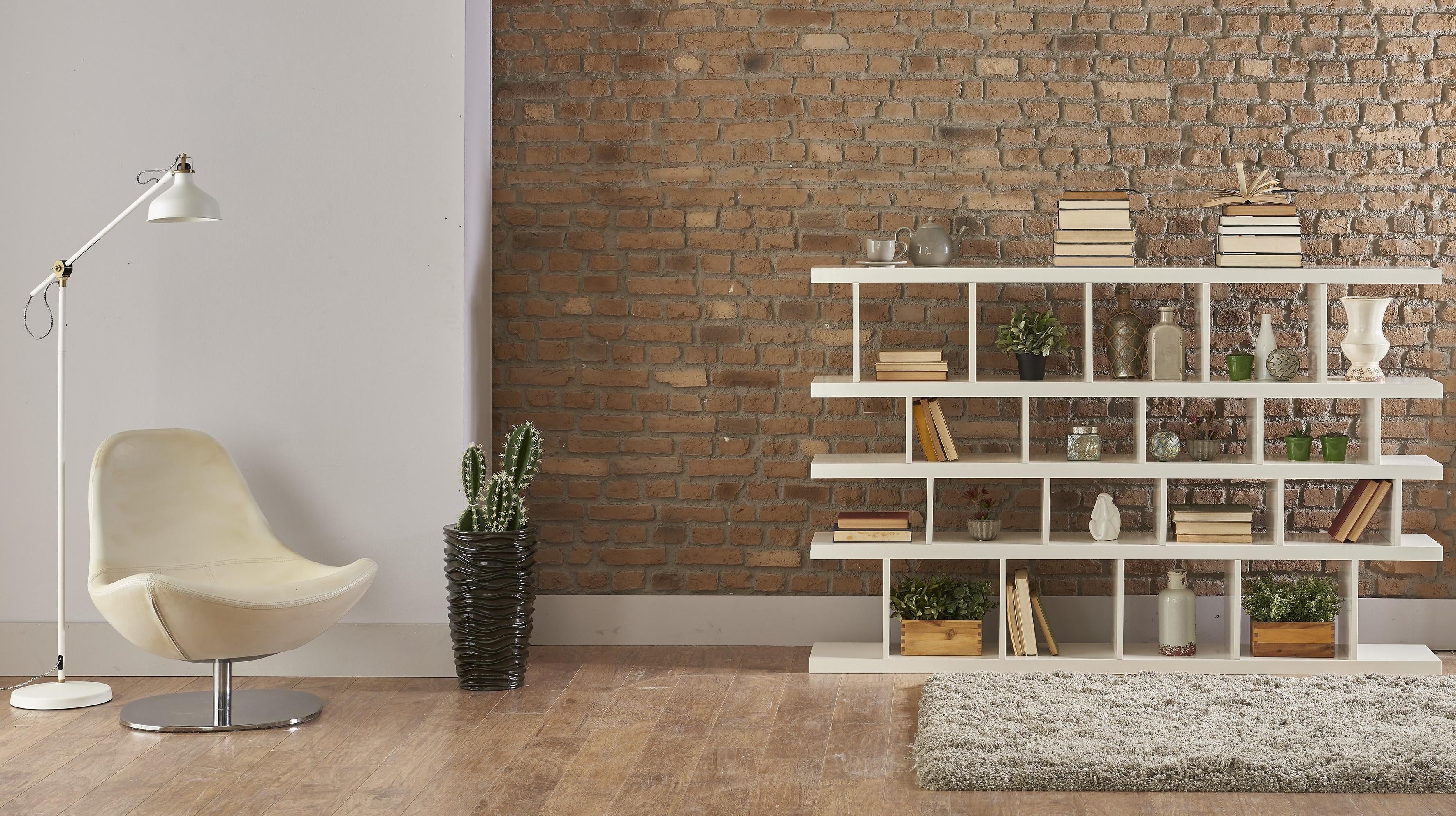
You knew this was coming, right? The first step to creating the illusion of more space is, well, actually freeing up space. Every room-enlarging project (that doesn’t involve actual renovation) must begin with a deep, intentional decluttering. This means removing bulky or unnecessary items, leaving empty space on open shelves instead of cramming every square inch chock full of books, pictures frames, vases, and knick knacks, and tucking all nonessential items (this includes extra blankets and that tenth throw pillow) out of sight. If it’s not adding to a spacious feeling in the room — move or get rid of it.
Keep furniture proportional to the room
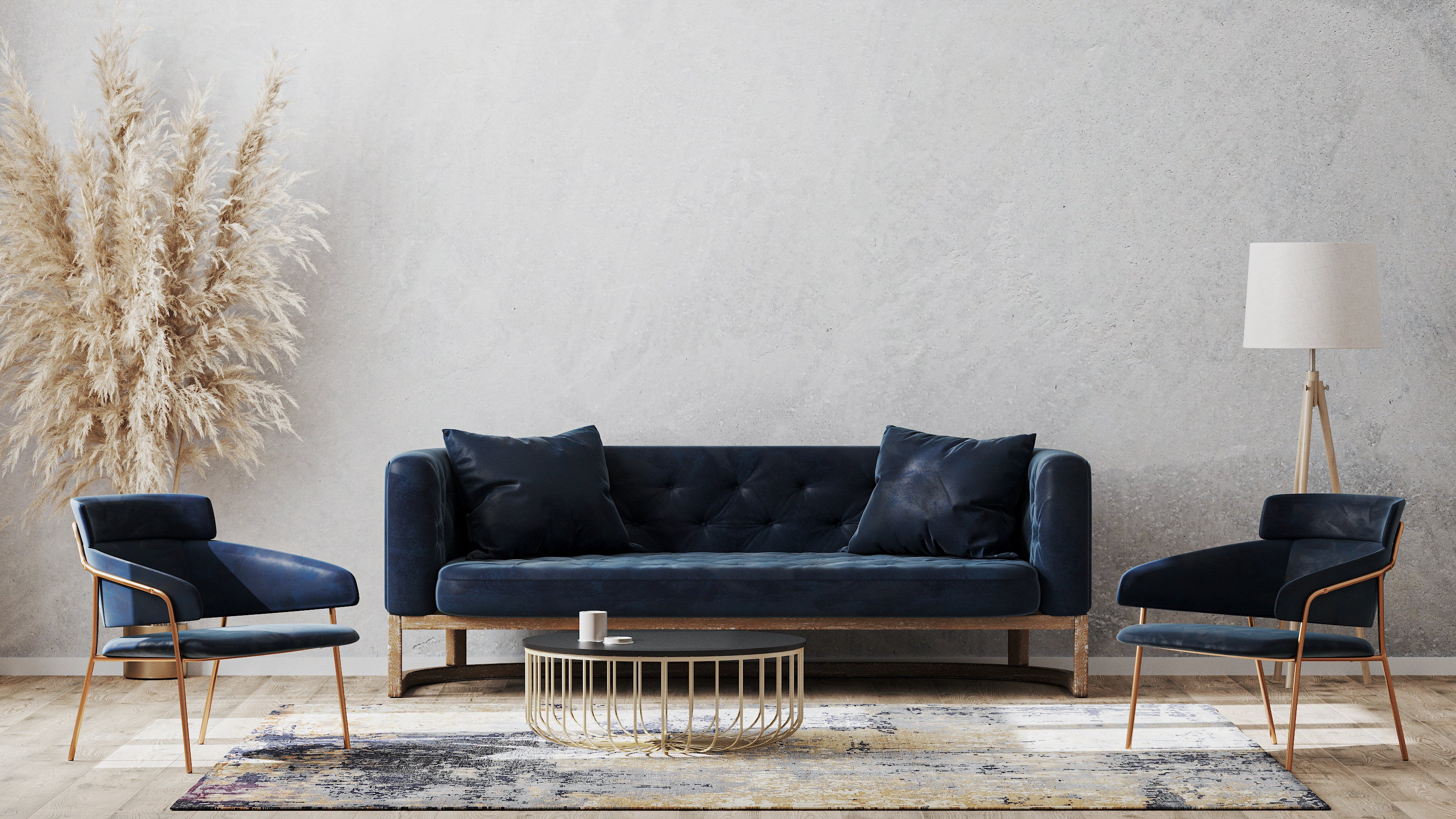
One of the easiest ways to make a room look bigger is to downsize the furniture in it, making sure no piece is too large or chunky for the space. Any pieces that extend to the edges of the room are too big and should be replaced. Leaving room between the sides of your furniture and the walls will create a sense of air flow and roominess. And, sorry La-Z-Boy lovers — opt for sleek, minimal designs rather than anything with plush, overstuffed cushions. Additionally, arrange furniture so that it doesn’t block any of the room’s main light sources.
Choose “leggy” furniture and light fixtures
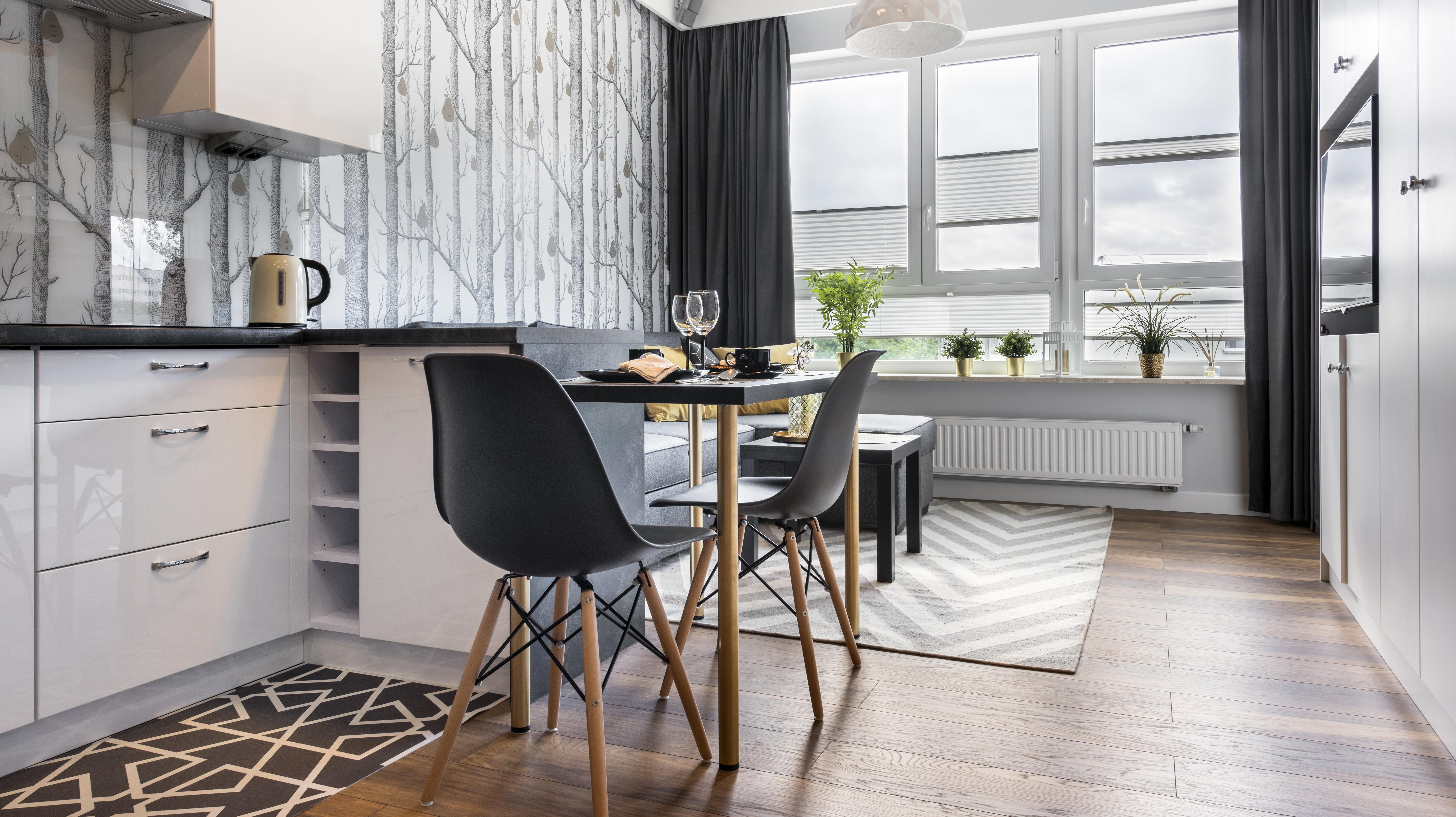
Create a sense of light, airy movement by selecting chairs and tables with exposed legs, and streamlined light fixtures with sleek arms and few bulbs. Furniture and fixtures with slender frames and visible legs give a sense of air circulation through the open spaces and can appear as if they’re floating. These optics trick the eye and mind into experiencing a greater sense of space. Consider materials such as wrought iron, as well as glass and lucite that you can see through for added effect.
Keep furniture and wall accents low
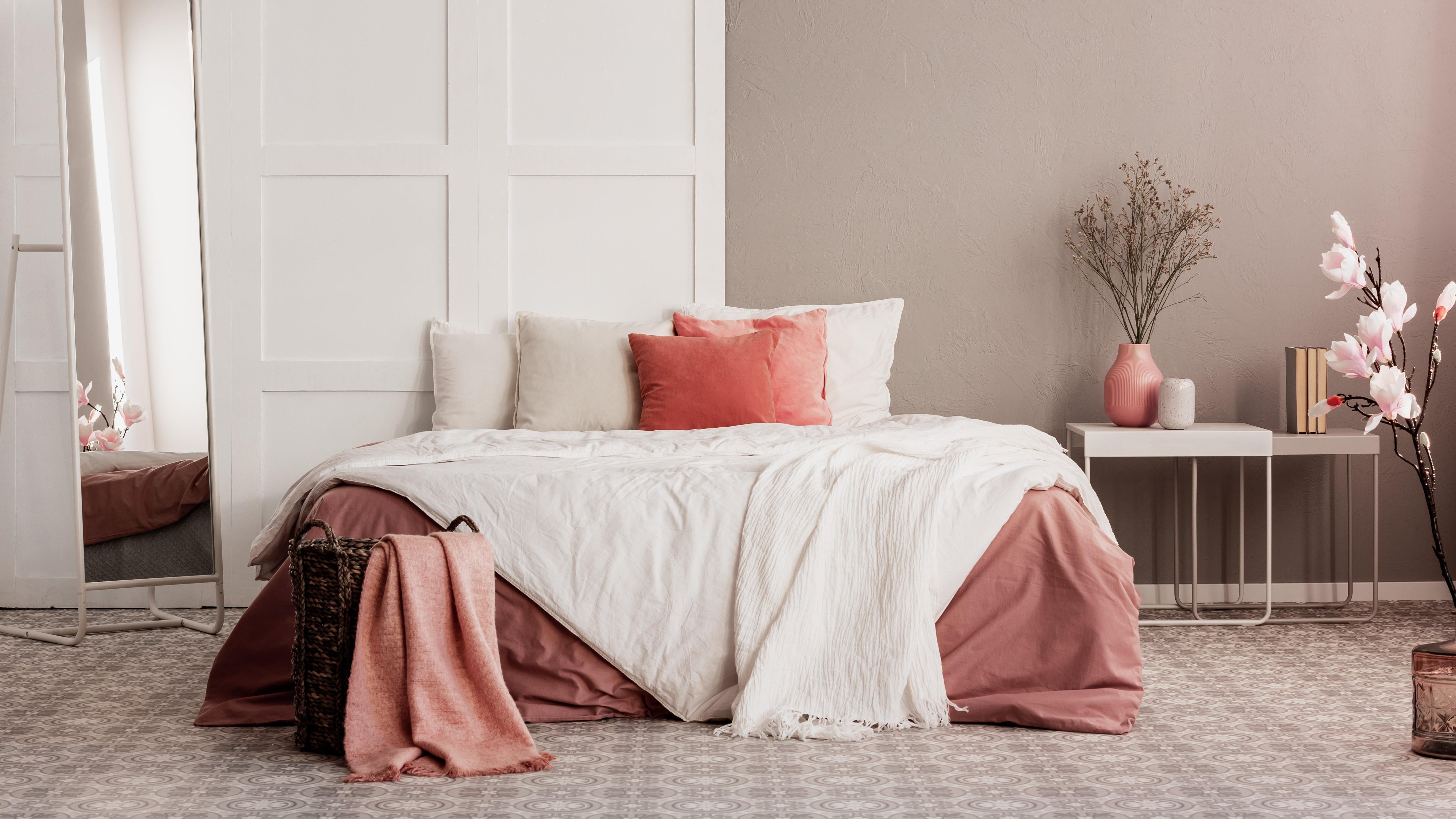
Create the perception of more vertical space by keeping furniture and wall accents close to the ground. Think ottomans, low tables, and Mad Men-style couches. Consider mid-century modern and 19th century pieces, which tend to be closer to the ground. You can forego an elevated bed frame altogether, and place your mattress and boxspring directly on the floor — or elevate your sleeping experience with a loft bed. (While this runs counter to the “keep it low” advice, it still achieves the main goal of leaving ample vertical space).
When it comes to art, ditch the traditional rules about hanging wall accents at eye level and place them lower and closer to the furniture, leaving empty space above. Having fewer, larger accents is better than decorating with many smaller ones that can make a space look cluttered.
Go white, very white
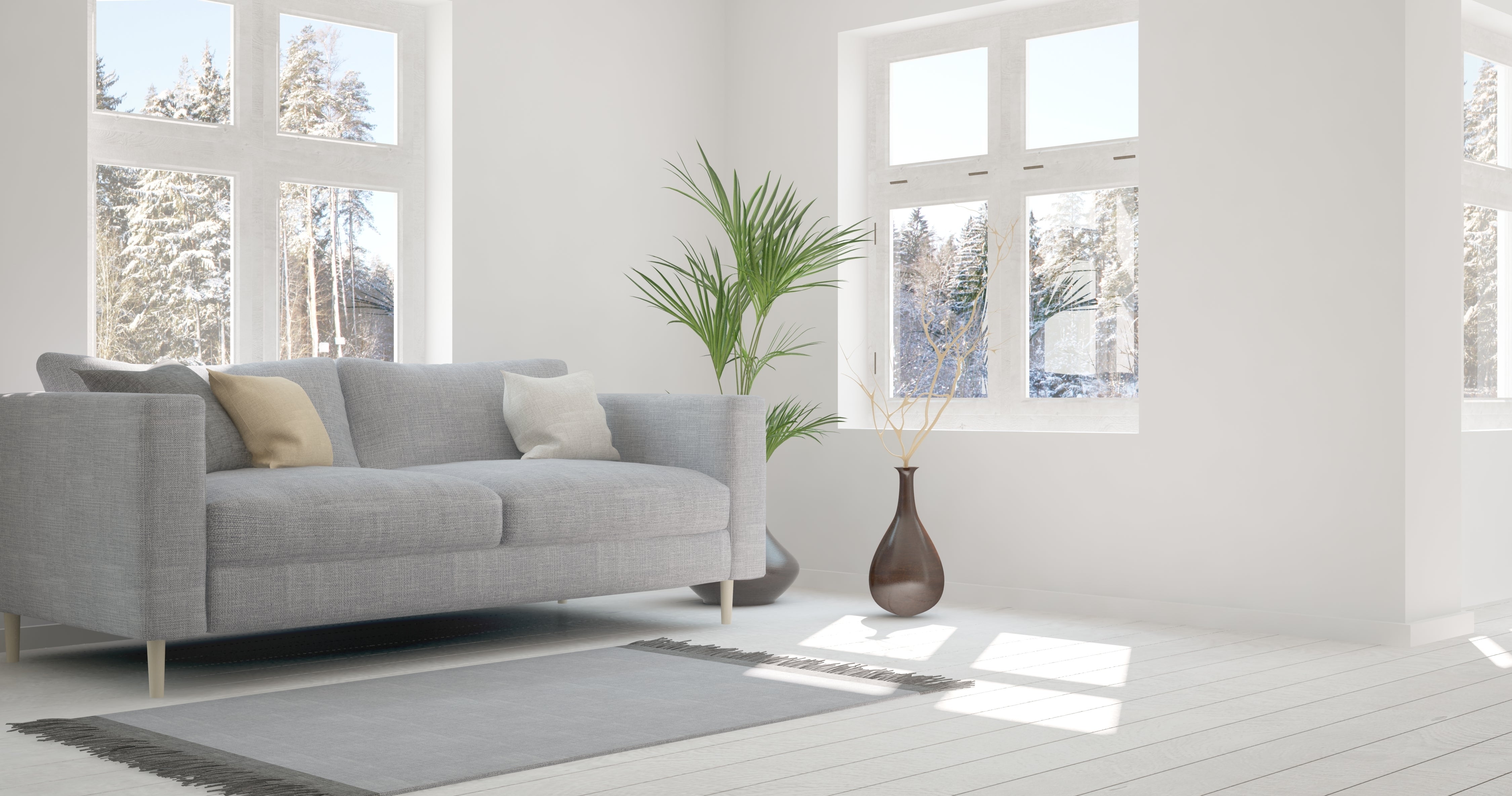
When trying to make a room appear bigger, the power of the colour white can’t be ignored. Its reflective nature accentuates light, immediately making a room seem brighter and airier. When walls and ceiling are both painted white, according to Remodelista, “it serves to blur the boundaries between wall and ceiling, causing your eye to travel up, essentially making the ceiling seem higher.”
If you’re worried about the room looking too sterile, don’t. It’s easy to liven and warm up a space with accent colours and textures such as grained wood, antiques, woven baskets, soft tan leather, sheepskin rugs, greenery, and warm metals such as brass or brushed gold.
Incorporate vertical lines
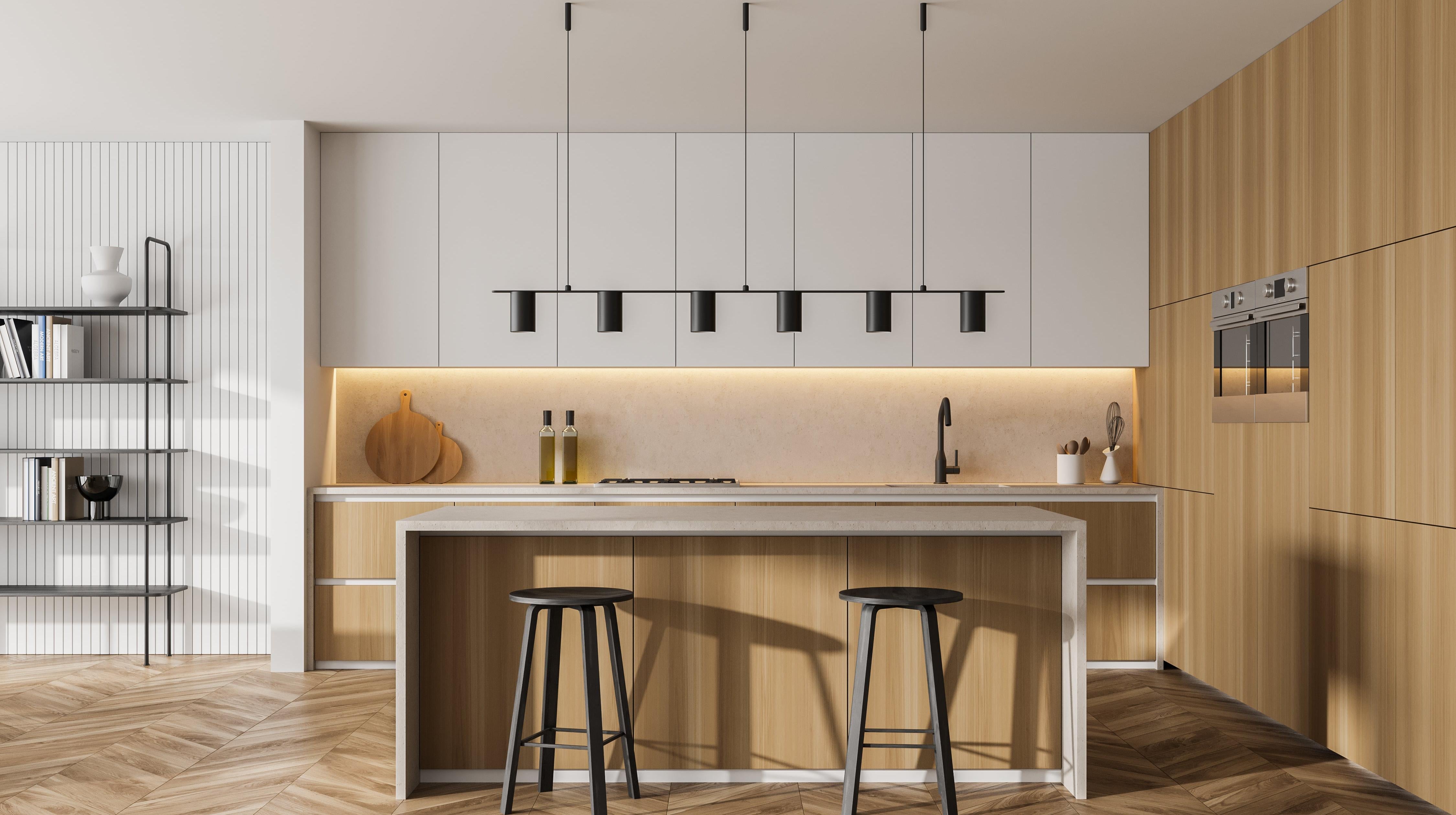
Emphasising ceiling height can take the eye’s attention away from a room’s small size. Use tall shelves, vertical shiplap, beadboard, lined wallpaper, board-and-batten wainscoting, or singular hanging bulbs to draw the eye up, up and away from any thoughts about the room’s minimal square footage.
One word: Mirrors
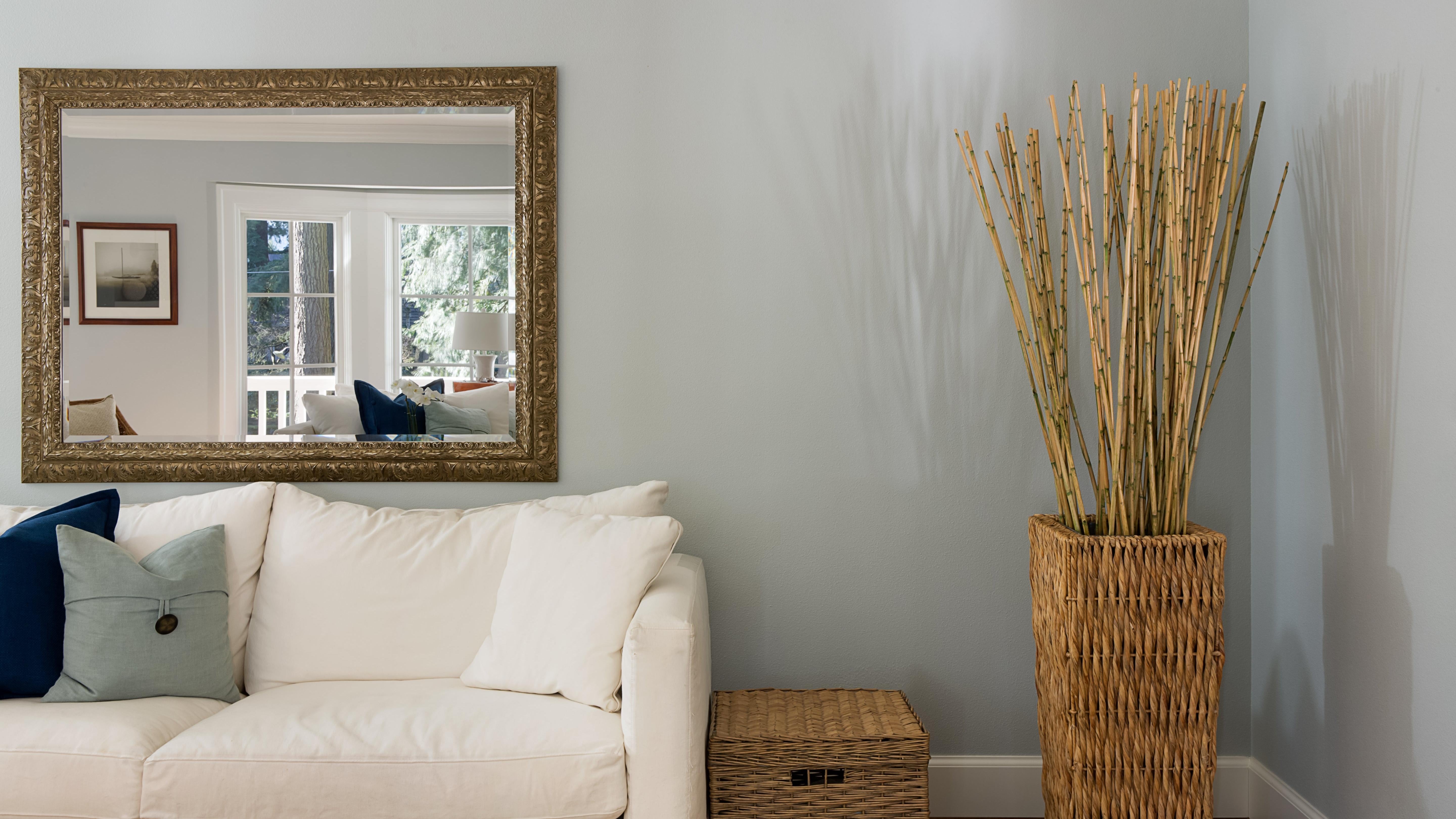
Mirrors are one of the greatest assets in any interior designer’s toolbox, especially when it comes to making small spaces feel larger. Place mirrors strategically throughout your rooms to reflect light and the view from your windows, which makes the mirror seem like another window itself. (Mirrors placed opposite windows and at the end of narrow hallways often achieve peak visual space-creating effect.) Use wall mirrors, mirrored chests, and accent trays — not large, heavy, standing mirrors that will take up valuable floor space.
Leave windows and floors bare
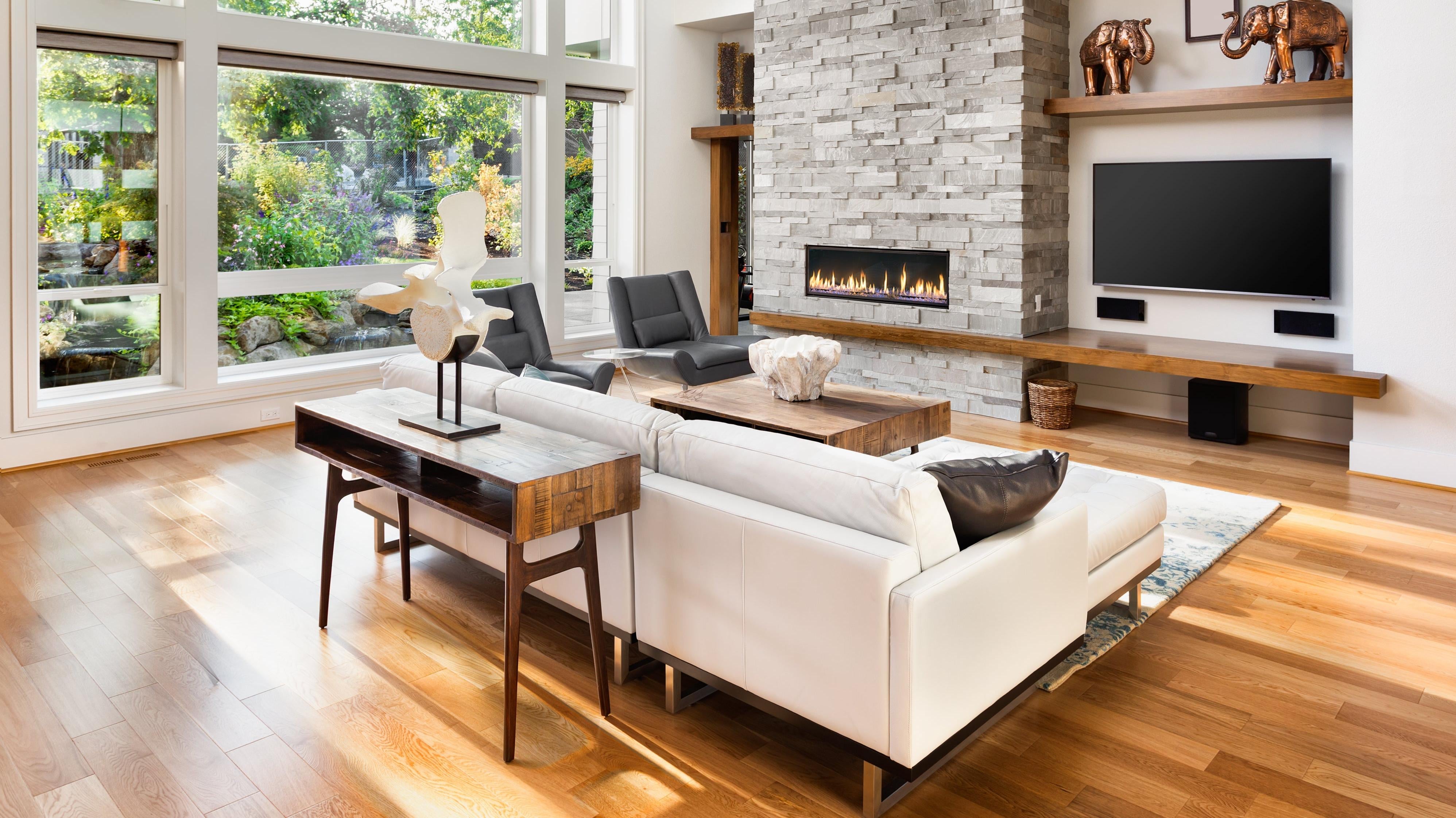
This means no — or minimal — curtains, drapes, and rugs. Curtains are one more (long) thing for the eye to take in, which can register as clutter and make windows appear smaller. They also, necessarily, block light and the view. If you do elect to have curtains, opt for a sheer, lightweight variety, and make sure the rod extends beyond the windows, so they can rest fully to the side of the window when open.
Exposed floors also reflect light, creating the illusion of more space. While a completely rugless home may not suit your aesthetic, consider reducing the quantity, thickness, colour, or busyness of patterns on your rugs.
Choose light fabrics (and colours)
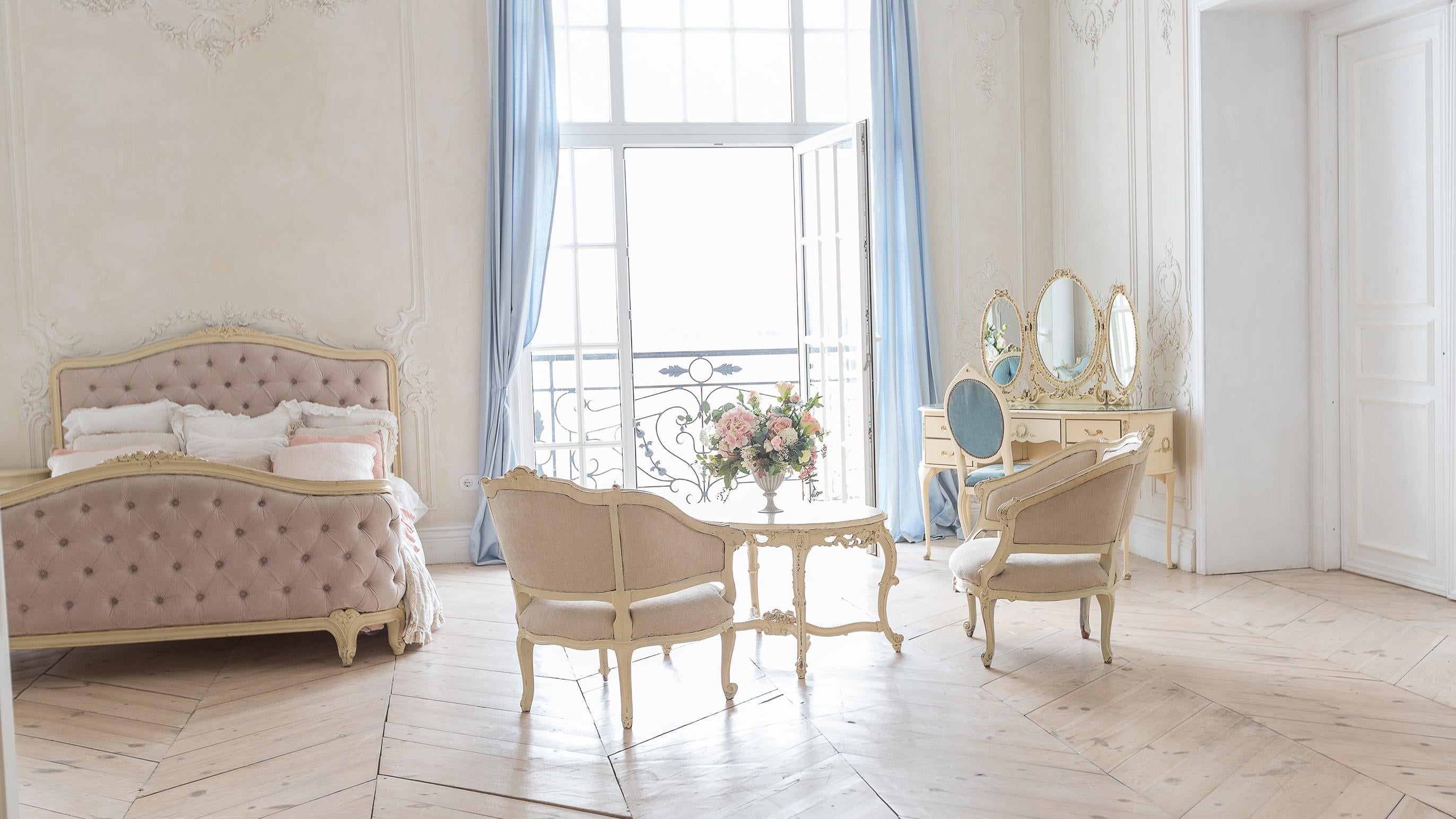
Heavy fabrics such as velvet, wool, flannel, tweed, suede, and faux-fur can visually take up more space make a room feel more stuffed than it is. Select cotton and linen-based fabrics for a lighter, airier feel. (If you opt for a heavier fabric, keep the fabric colour light.) Stay from brown, black and dark blues in favour of lighter neutral tones to which you can add pops of colour.
Create a clear walking path
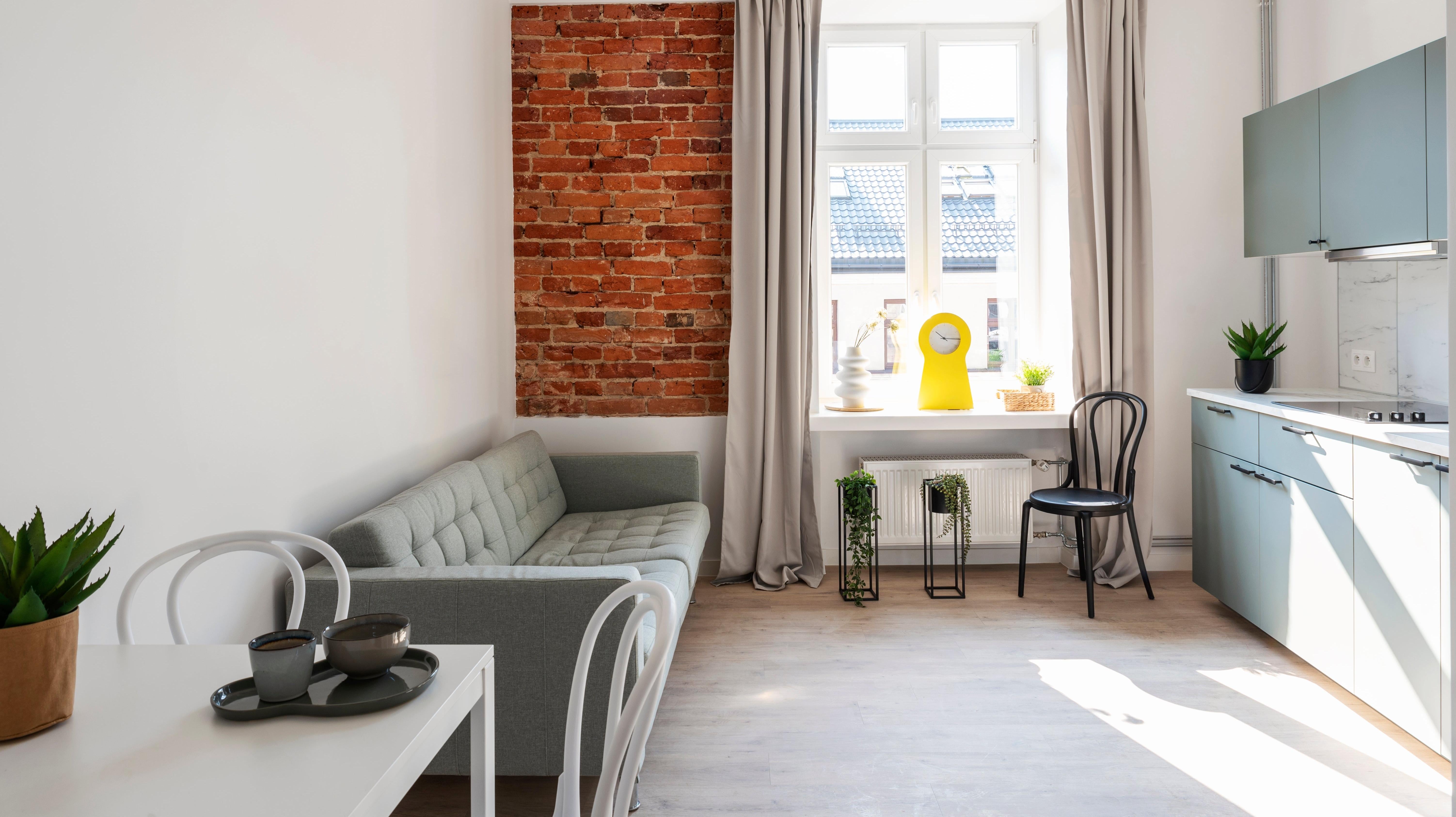
It’s natural to want to put your furniture in the centre of a room to lend it a feeling of symmetry. But when you’re working within a confined space, first pay attention to creating a clear, open pathway through the room, so it doesn’t look like an obstacle course, or a one-way ticket to falling on your face. Make sure no furniture is obstructing the natural walkway. Keep taller objects up against the walls, while shorter elements occupy the main space. Not only will it look better; you’ll trip less.
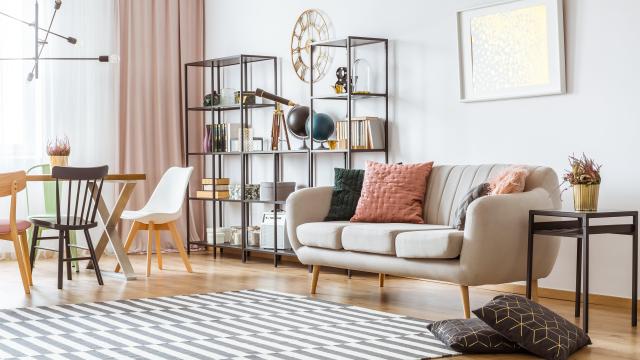
Leave a Reply
You must be logged in to post a comment.